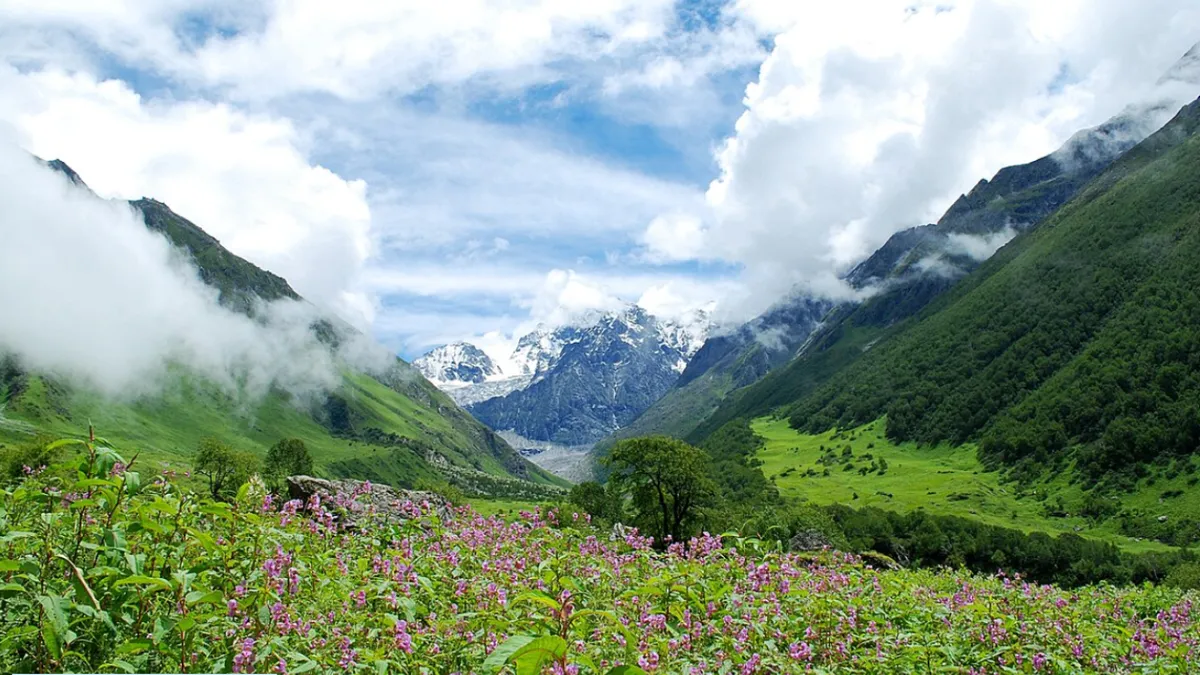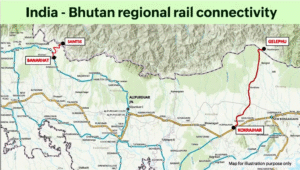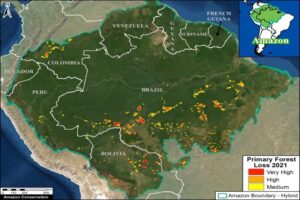
Road Connectivity Set to Boost Tourism in the ‘Valley of Flowers’ – Bhal Padri, Doda (J&K)
CLAT Gurukul – best online coaching for CLAT
“online coaching for CLAT”, “CLAT Current affairs 2026”, “Current Affairs 2026”
Introduction
PRO-CONNECTIVITY PERSPECTIVE:
The Union Territory of Jammu & Kashmir is witnessing a silent revolution in tourism. With the completion of a 10-km road from Padi to Bhal Padri — a place known as the ‘Valley of Flowers’ — tourists will now be able to experience the untouched alpine meadows, vibrant flora, and exotic biodiversity nestled in the Kailash ranges of the Doda district. This project, led by the J&K Tourism Department, is expected to open economic avenues, encourage ecotourism, and counter regional alienation.
CONCERNS OVER TOURISM EXPANSION:
However, critics argue that infrastructure expansion in ecologically sensitive zones could damage the fragile Himalayan ecosystem, especially in the absence of strong eco-tourism regulations. The fear of habitat destruction, increased footfall in protected zones, and potential terrorist threats post the Pahalgam attack, raises valid concerns about unchecked development. Can tourism and environmental conservation coexist?
Why in News:
- The J&K government has built a 10-km road connecting Padi to Bhal Padri, popularly known as the Valley of Flowers.
- This region, located at an altitude of 11,000 ft, was earlier accessible only to nomads and a few trekkers.
- Aimed at boosting tourism and local economy, the road’s construction also comes in the wake of improved security measures post a terror attack in Pahalgam.
- The move is seen as part of broader efforts to revive tourism in Jammu & Kashmir through connectivity and cultural festivals.
Point-wise Summary:
- Location and Description:
- Bhal Padri, located in the Gandoh sub-division of Doda, J&K.
- Situated at an altitude of 11,000 ft, in the Kailash range of the Pir Panjal Himalayas.
- Known for alpine meadows, flora, streams, pine forests, and Betula utilis (bhojpatra) trees.
- Road Construction:
- A 10-km road from Padi to Bhal Padri has been constructed.
- Completion of blacktopping is pending and will resume post August 15, after the monsoon season.
- Access and Transformation:
- The area, earlier accessible only to nomadic tribes like Gujjars and Bakarwals, is now open to tourists.
- Previously a trekking-only destination, it is now car-accessible.
- Tourism Development:
- The J&K Tourism Department and Doda district administration are promoting Bhal Padri as a tourist hub.
- A festival is scheduled for July 20, coordinated by the Educational Environmental Social Sports and Cultural Society of Bhalessa.
- Environmental Significance:
- The area is rich in biodiversity and part of a high-altitude ecosystem.
- Flora includes dense pine forests and endemic species like Betula utilis.
- Strategic Importance:
- Bhal Padri is the second-longest valley in Pir Panjal after Seoj Dhar.
- Enhanced access has the potential to revive tourism in regions impacted by past terror incidents.
- Security Measures:
- Deputy Commissioner of Doda, Harvinder Singh, visited the site to review security preparedness.
- Comes after the Pahalgam terror attack, where 25 tourists and a local ponywala were killed.
- Impact on Local Communities:
- Potential employment boost for local tribal populations and small entrepreneurs.
- Opportunities for homestays, local guides, and craft vendors.
- Environmental Concerns Raised:
- Unregulated tourism can lead to plastic pollution, soil erosion, and damage to alpine meadows.
- Needs a carrying capacity study and sustainable tourism guidelines.
- Policy Perspective:
- Reflects the Government of India’s policy shift toward mainstreaming remote regions via infrastructure and tourism.
- Similar initiatives underway in Kupwara, Gurez, and Lolab valleys.
Notes – Explanation of Terms
- Bhal Padri: High-altitude meadow in Doda, known for its rich biodiversity and seasonal bloom of wildflowers.
- Pir Panjal Range: One of the main ranges of the Lesser Himalayas, spanning J&K and Himachal Pradesh.
- Gujjars & Bakarwals: Nomadic tribal communities in J&K who traditionally migrate with their livestock to alpine pastures during summer.
- Blacktopping: Final layer of road construction that makes it usable for vehicles — pending due to monsoon delays.
- Betula utilis: Also known as Bhojpatra, a medicinal and historically significant tree species found in the Himalayas.
- Pahalgam Attack: Refers to a tragic terrorist incident in Kashmir’s Pahalgam where tourists were targeted in 2025.
Relevance for CLAT 2026 Aspirants:
This topic merges legal, environmental, and administrative dimensions — crucial for CLAT aspirants.
What to focus on:
- Tourism vs. environmental sustainability (Legal Reasoning)
- Tribal rights and inclusion in development (Current Affairs)
- Infrastructure as a tool of counterinsurgency in border states (GK & Legal Policy)
Probable CLAT Question Types:
- Passage-based questions on eco-tourism policies
- MCQs on tribal rights or constitutional protections
- Questions based on geography or strategic policy-making
Sample Legal Reasoning Question:
Passage:
A state government builds a road to a previously inaccessible forest area to boost tourism. Environmentalists oppose this, citing the risk of biodiversity loss. Tribal communities welcome the move due to economic benefits.
Question:
Which principle balances both arguments best?
- Absolute freedom to access all forest lands
B. Environmental conservation overrides all developmental goals
C. Sustainable development that balances ecology and economy
D. Only local communities should decide on infrastructure
Correct Answer: C
Conclusion:
The new road to Bhal Padri is more than a pathway — it symbolizes India’s dual commitment to tourism-led development and territorial integration. However, for it to truly flourish, the region must implement ecologically sustainable models of tourism. This case also presents a classic policy dilemma — how to grow economically without sacrificing environmental integrity — a crucial issue in legal reasoning and constitutional studies.




